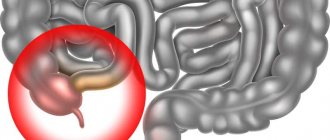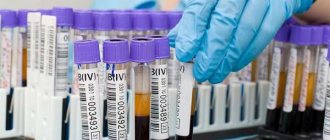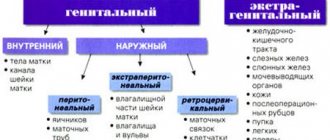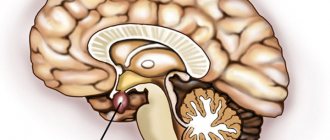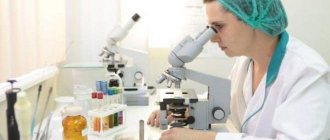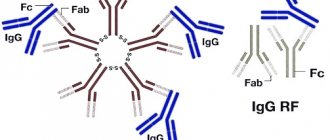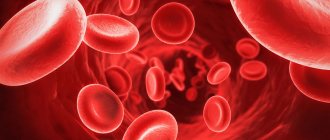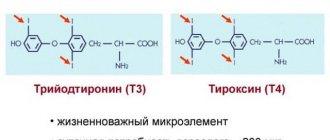Types and forms of myoclonus
Benign myoclonus
These forms do not require a specific course of treatment and are divided into:
- Sleep myoclonus (nighttime) - occurs at the moment of transition from the waking phase to the falling asleep stage, is observed in most healthy people periodically or once and does not last more than a few minutes.
- Myoclonus of fright. It is mainly manifested by a sharp start to an external stimulus - a shout, a falling object, a flash of bright light. May be accompanied by tachycardia, increased breathing, and sweating.
- Hiccups are manifested by contraction of the internal diaphragm and larynx and occur as a response to irritation of certain parts of the brain stem, phrenic and vagus nerves. Hiccups can be caused by overdistension of the stomach, chronic diseases of the digestive organs, pericardium, and intoxication.
- Exercise myoclonus is caused by intense work, and myoclonus may occur in the calf muscles or eyes.
Benign myoclonus of early age is registered in an infant in the first months of life and occurs during wakefulness, sleep and feeding. Young children may also experience sleep myoclonus.
It is manifested by contraction of the muscles of the neck (head nod), all limbs and torso. In most cases, it goes away within a few months without drug correction.
Negative myoclonus
Negative or pathological myoclonus has an epileptic or non-epileptic mechanism for the development of the disease; it requires clarification of the cause and the appointment of an appropriate treatment regimen.
The most famous example of a “negative form” is asterixis - an irregular tremor of the hands, observed in the position of an extended limb. Asterixis can also appear with tonic tension of other muscle groups, including the tongue.
This form of myoclonus is more often detected in toxic or metabolic encephalopathy.
Myoclonus can manifest itself in certain parts of the body and is divided into:
- Focal, that is, involving one group of muscles - oculomotor, facial.
- Segmental - with this form, adjacent muscle groups are involved in the pathological process.
- The generalized form is manifested by visible convulsive twitching of all muscle groups. Often this form leads to a person’s fall.
Polyminimyoclonus is rapid, non-rhythmic muscle contractions, clinically similar to tremor. It can be long-lasting or last only a few seconds, and can be triggered by sudden movements.
Often this form of hypertension is localized in the eye muscles and is manifested by erratic movements of the eyeballs, their intensification occurs when trying to fix the gaze on a certain point.
Classification of myoclonus by anatomical location
The following types are distinguished:
- Cortical myoclonus is determined by the epileptic discharge of neurons located in the hemispheres of the cerebral cortex. The cortical form is often recorded with generalized seizures of epilepsy.
- Subcortical myoclonus develops with increased excitability of the motor centers of the brain, cerebellum, and basal ganglia.
- Spinal myoclonus is associated with a pathological increase in motor neuron activity at a specific level of the spinal cord. Often develops after injuries and inflammation of the spinal cord.
It is necessary to distinguish myoclonus from convulsive syndrome in children. In this article you can read about their differences.
Convulsive syndrome can be a sign of very dangerous diseases. For example, such as protoplasmic astrocytoma of the brain. Read more here.
Symptoms
When one or more muscles involuntarily contract, a person feels like an electric shock lasting from 1-3 seconds to several hours.
If we are talking about the fact that nocturnal myoclonic attacks , then among the symptoms we can highlight involuntary shuddering of a sleeping person, which also often occurs in children.
Rare manifestations of muscle contraction, which are associated with exposure to irritants, are not pathology and may refer to physiological myoclonus, which goes away on its own.
Important! With pathological causes, myoclonus becomes more frequent over time, and the force of muscle contraction increases.
Also, when a person’s psycho-emotional and physical condition deteriorates, an increase in startling may be observed, especially during the period of falling asleep.
Stressful situations lead to rhythmic shuddering, trembling throughout the body, as well as involuntary flexion of the hands or feet.
External manifestations include periodic trembling of various muscle groups, involuntary flexion and extension of the feet and hands, as well as rhythmic trembling of the whole body are possible.
When myoclonus occurs in the area of the palate and tongue, speech disturbances are observed - short-term or long-term.
Causes of the disease
Among the reasons contributing to the appearance of primary signs of myoclonus are:
- Metabolic disorders - phenylketonuria, hepatolenticular degeneration.
- Metabolic failures in the body that occur with liver and kidney failure.
- Hypoxia of brain parts.
- Acute or chronic intoxication with salts of heavy metals or organic components of certain substances.
- A hereditary disease with an autosomal dominant type of pathological genes.
- Multiple sclerosis.
- Injuries.
- Treatment with certain groups of pharmaceutical drugs.
- Vascular and brain diseases.
- Toxoplasmosis.
Where does it appear?
Myoclonus can appear anywhere – there is no cyclicity or relationship between parts of the body. But it can manifest itself in different ways:
- The convulsions are pronounced, strong, shaking the whole body.
- A person may shake slightly - just a little.
- Sometimes the effect of falling occurs in a dream - this is also a manifestation of myoclonus.
Typically, such states occur half asleep - before the phase of immersion in deep sleep. But sometimes they happen during deep sleep.
Main symptoms and manifestations of various types of myoclonus
Myoclonus is manifested by involuntary and uncontrolled twitching of muscle groups. The symptoms are similar to a sudden electric shock.
The contraction lasts from several seconds, minutes to hours.
Hours-long myoclonus often develops with a severe lack of oxygen. Twitching can appear in the legs, arms, mouth, and the generalized form is accompanied by an unexpected fall.
Myoclonia intensifies during emotional experiences and is practically not observed during sleep.
One-time muscle contractions that occur at the moment of transition to sleep or at the moment of waking up are recorded in most people and are a variant of the norm.
Myoclonic epilepsy
Epileptic myoclonus looks like a sudden shaking of the body during severe fright. In this case, the hands sharply move apart or move to the sides; when an object is in them, it falls out.
If a person falls, he immediately gets up, this can be repeated up to several times, consciousness is clear, only in some cases a slight, quickly passing stupor may be observed.
The attack lasts for several seconds or with short breaks over several hours. This form of myoclonus often first appears in childhood or adolescence.
Myoclonus can occur against the background of alcoholism. In this article you can read about drops for alcoholism, when they are prescribed and why.
The most common drug for alcoholism is Colme. Read more...
By clicking on the link, you will learn how alcoholic encephalopathy is treated in a complex https://gidmed.com/bolezni-nevrologii/alcogolizm/alkogolnaya-entsefalopatiya-golovnogo-mozga.html.
Nocturnal myoclonus
Nocturnal myoclonia occurs at the beginning of falling asleep or during sleep, manifested by motor, sensory or mental changes visible to others.
According to symptoms there are:
- Restless legs syndrome is a sudden shaking of the legs that causes you to wake up.
- Stereotypical movements - sleepwalking, finger sucking, chewing, sleep talking, bruxism, asthmatic attack, paroxysmal vomiting, paroxysmal movements, feeling of suffocation, night terrors and nightmares.
- Myoclonus of fear
Myoclonus in children can occur due to sudden fear - a sharp fall of an object, a dog attack, or shouting. It manifests itself as a sharp shudder, increased heart rate, possible cessation of breathing followed by increased frequency, a rush of blood to the face, and excessive sweating.
The likelihood of convulsive muscle twitching increases with anxiety and emotional instability.
Myoclonus of the calf muscles
Myoclonus of the calf muscles is often confused with leg cramps, but this is not true. With myoclonus, there is simply a sharp contraction of muscles without loss of consciousness.
Most often they appear while falling asleep.
In women, the causes of such myoclonus can be banal leg fatigue associated with wearing high heels.
Bad habits such as smoking and alcohol can also provoke such contractions.
When they are consumed, sodium and calcium are washed out of the muscle layer, which first leads to its weakening, then severe cramps occur.
It should be noted that myoclonus of the legs can appear when a person develops varicose veins. In this case, there will be a deterioration in the blood supply to the extremities and their swelling.
If cramps appear extremely rarely and the person has experienced serious physical activity before, then there is no particular cause for concern, you just need to replenish the mineral balance and rest.
But, if myoclonus of the calf muscles causes considerable discomfort and is accompanied by pain, then you should immediately consult a doctor so that he can conduct an examination and prescribe treatment.
Treatment of myoclonus of the calf muscles most often comes down to reducing the load, taking anti-inflammatory drugs (extremely rarely and only in the presence of severe pain) and a number of preventive measures.
Diagnostics
Magnetic resonance imaging can confirm or refute the suspicion of the development of myoclonus
Benign and other myoclonus requires diagnostics of the patient’s body. Without it, it is impossible to select adequate therapy for the patient. The study also makes it clear why the disorder occurred, which manifests itself in childhood or in adulthood. A person does not always know that when he goes to bed, he experiences convulsions characteristic of this pathology. In this case, in a child or adult, those who are near the patient at the time of sleep can determine the problem.
Nocturnal and other types of myoclonus in adults and children are diagnosed by a neurologist.
First of all, the doctor examines the patient. If possible, the patient should tell the specialist about all the problems that relate to his health. Based on a person’s complaints, a neurologist can make a preliminary diagnosis. Further diagnostic methods will be aimed at confirming it.
Myoclonus in various forms, such as absence eyelids, may bother the patient's family members. The doctor should find out about this during a personal conversation with them or the patient. Thanks to this, it is possible to determine the influence of a genetic factor that increases the likelihood of a person developing a pathology.
It is imperative to inform the specialist about the severe stress and anxiety that the patient experiences, since they can provoke various types of myoclonus, including the syndrome that manifests itself during sleep.
To confirm or refute the doctor’s suspicions that the patient is developing cortical myoclonus, he must undergo a series of diagnostic measures:
- X-ray examination of the skull.
- Magnetic resonance imaging (MRI) of the spinal cord and brain.
- Computed tomography (CT).
- Blood chemistry.
- Electroencephalography (EEG).
To avoid errors in the diagnosis process, it is necessary to conduct a differential diagnosis. It allows you to distinguish myoclonus from nervous tics, tremor, focal motor seizures and tetany.
Treatment of myoclonus
Benign myoclonus, which develops at the moment of falling asleep, usually does not require a course of drug therapy.
In case of frequently recurring convulsions that disrupt the patient’s life and performance, it is necessary to undergo a full examination of the body before choosing a disease correction regimen.
The main stages of the treatment of myoclonus:
- Correction of metabolic failures. With elevated creatinine levels, elimination of renal pathologies is indicated.
- Myoclonic contractions are eliminated by Clonazepam and drugs based on valproic acid.
- If the origin is epileptic, the use of anticonvulsants is indicated.
- Sedative therapy, adherence to a daily routine, short courses of medications with a hypnotic effect.
When treating nocturnal myoclonus in children, it is necessary to avoid watching evening TV shows and noisy games before bedtime. Children can be given valerian over several evenings in the dosage prescribed by the doctor.
You may also be interested in why your legs cramp. Here you will find the answer to this question.
This section will tell you about neuralgia of the thoracic spine.
Features of medical care
Typically, physiological myoclonus does not require treatment; it goes away on its own over time. If they occur frequently, then in these cases the doctor prescribes drugs with a sedative effect to calm the nervous system - Valocordin or valerian tincture. Sometimes you can use herbal medicine with motherwort or lemon balm.
Frequently recurring cramps that cause problems and discomfort must be treated. Typically treatment consists of the following steps:
First of all, you need to conduct an examination and eliminate the first cause that caused myoclonus. Then drugs such as Carbamazepine, Tiapride, Clonazepam, neurometabolic stimulants (nootropic drugs), antiepileptic drugs such as valproic acid are prescribed. They are either taken orally or administered through intramuscular injections.
Clonazepam and drugs based on valperic acid help quite well. Clonazepam should be taken up to 3 times a day at a dose of 0.5-2 mg.
Many forms of myoclonus respond well to L-hydroxytryptophan, which is a precursor to serotonin. But this drug, which should be used in conjunction with the decarboxylase inhibitor drug Carbidopa, is still under investigation.
Complex therapy must be prescribed. The doctor must prescribe a course of potent medications, which include the following types:
- nootropics;
- corticosteroids;
- neuroleptics;
- benzodiazepines.
Prevention
The main preventive measure to prevent a recurrent attack of myoclonus is a calm environment, adequate treatment of concomitant ailments and psycho-emotional stability of the patient. A positive effect is achieved through complex therapy.
So, doctors advise a person suffering from myoclonus not to let the disease progress and adhere to the following recommendations:
- Lead a healthy lifestyle, quit smoking and alcohol
- Get more rest and walks in the fresh air
- Eat right, include vitamins and minerals
- Do massages and exercises to strengthen muscles
- Physiotherapy and acupuncture have also proven themselves well.
Treatment of myoclonus is difficult, but with the patient’s persistence and a properly designed treatment regimen by the doctor, it is quite possible. Sometimes, to eliminate unpleasant symptoms, only therapy for the underlying disease is required.
Once again about myoclonus in the video:
Symptoms of pathology
Myoclonus can be perceived as a disease when convulsions are observed frequently and are accompanied by a deterioration in both physical and psychological condition . When spasms are caused by various diseases, their absence during sleep is noted. However, in an active state, with any stress or emotional shock, they intensify.
Cortical myoclonus is characterized by rapid muscle twitching that resembles the sensation of an electric shock. Spasms can affect all muscles or affect certain groups of them. Sometimes this type of pathology is expressed in erratic twitching of some areas, weak twitching of the facial muscles, as well as those located in the tongue and soft palate, which often causes short-term problems with speech.
The epileptic form is characterized by severe convulsions of the limbs, neck, head, often combined with seizures. In general, symptoms with the development of any type of myoclonus include:
- development of frequent convulsive contractions;
- noticeable deterioration in physical condition along with psychological;
- presence of seizures;
- temporarily impaired speech;
- spasms of the muscle tissues of the tongue, palate, facial muscles.
Why does flinching happen?
As mentioned above, if the hypothalamus, which regulates the neuroendocrine activity of the brain, continues to be awake during the period of relaxation of the human muscles, then myoclonus occurs. As a rule, this happens to people who, at the moment of falling asleep, continue to think about work tasks, decide something, or simply “scroll through”, emotionally experiencing the day they have just lived through. Psychological and physical stress does not allow a tired body to relax in a synchronized manner, and the central nervous system, while remaining awake, can send out multiple electrical impulses, leading the body to “motor awakening.”
In children, myoclonus is quite common; falling asleep, they twitch their arms, legs, and heads. This happens for a similar reason - just a few minutes ago the child was awake, playing, crying a lot, saw something that left an amazing impression in his memory, and then the little tired organism fell asleep. His central nervous system is still excited by the events he has just experienced, and his muscles are already relaxing, moving into a certain phase of sleep.




